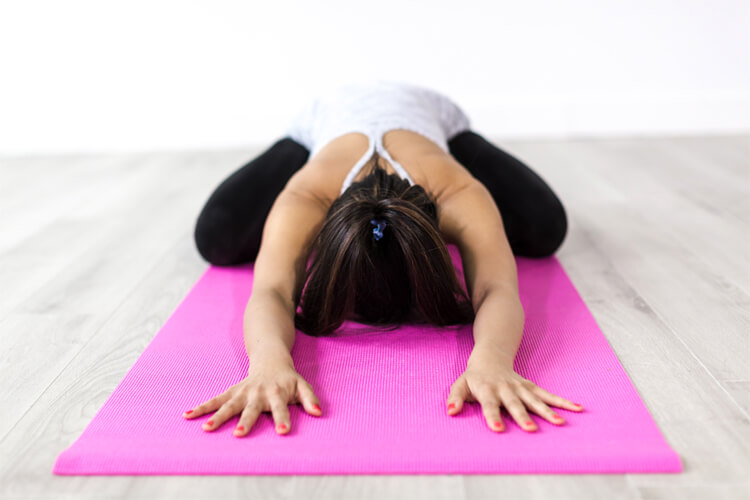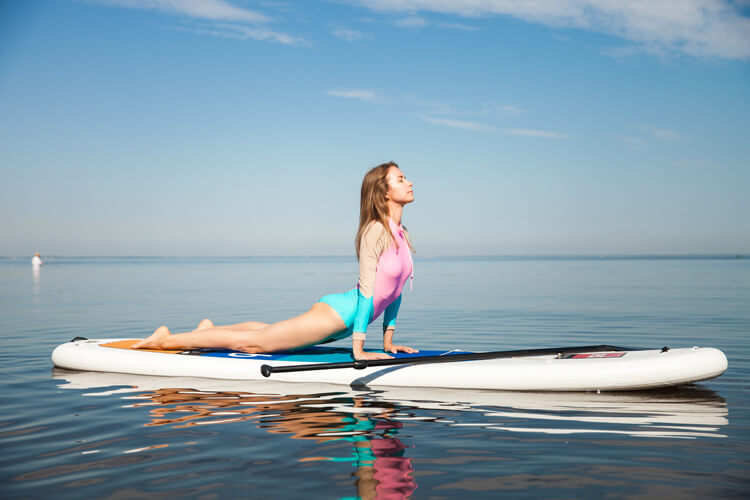The downward-facing frog pose is an all-around workout routine that promotes the stretching of muscles and connective tissues. Learn how to do the frog stretch.
Flexibility is key to physical fitness and an essential requirement in action sports like surfing, skateboarding, gymnastics, etc.
The frog stretch has many benefits.
It is a dynamic stretching exercise and one of the best ways to open and exercise the inner thigh muscles, groin, hip flexors, and rotators.
It is a traditional stretching exercise performed by athletes and sportspeople that improves coordination and even digestive health.
Stretching is great for increasing blood circulation around the body and improves overall flexibility and contract-relax situations.
"Stretching, as it relates to physical health and fitness, is the process of placing particular parts of the body into a position that will lengthen the muscles and their associated soft tissues," notes Brad Walker, author of "The Ultimate Guide to Stretching and Flexibility."
"Upon undertaking a regular stretching program, a number of changes begin to occur within the body and specifically within the muscles themselves."
"Other tissues that begin to adapt to the stretching process include the fascia, tendons, skin, and scar tissue."

A Workout Exercise for All Body
Good flexibility will allow you to move and exercise without restrictions, especially considering that muscles start to tighten and underperform with age.
Although the frog pose is commonly associated with yoga, it has consistently become a go-to stretching workout routine adopted by anaerobic and aerobic sports.
The downward-facing frog posture, also known as mandukasana in Sanscrit, looks like a simple exercise, but it's quite demanding and will exercise several core muscles.
Some even say it's extremely uncomfortable, and they have trouble doing it. But yoga poses are an excellent workout for surfers.
The frog stretch improves hip mobility and increases your squat and deadlift by putting pressure on your knees.
So, make sure you practice it on a comfortable yoga mat, carpet, or even on the sand at the beach.
Frog Stretch 101
What is the duration of the frog stretch? You can hold this pose for one to 15 minutes.
A full frog pose exercise takes around 15 minutes. Make sure you have a warm-up and a simple stretching routine before doing the frog stretch.
Remember to pay attention to your breathing.
The longer a stretch is held, the more likely it is that the muscles will relax and lengthen.
If you need to take a break, do it. If you feel pain, stop. Here's how to perform a frog stretch;
- Come to all four facing sideways on your mat;
- Slide your knees apart and take a look back to check if they're in line with the hips and the ankle at a 90-degree angle;
- Lower your upper body to your forearms or palms and lie down on your belly;
- Hold the position for 60 seconds;
- Slowly sink your body a little deeper toward the floor with every exhale;
- Take long breaths;
- Begin rocking forward and backward at a comfortable pace;
- At the five-minute mark, lift your chest high, press the hips closer toward the mat, and release the elbows down;
- Repeat the previous step ten times while keeping the ankles flat on the floor;
- Continue to breathe deeply into your forearms;
- Now, press into your hands, walk your elbows slightly to your left side, and hold there;
- Move to the other side and hold;
- Return to the center, raise your chest, and press your hips closer toward the mat;
- Inhale and exhale three times;
- Slowly lower your upper body toward the floor and extend your arms to both sides until your shoulders touch the floor;
- Press your hands into the mat, lift your chest;
- Weave your left hand under and let your left shoulder come down for a twist;
- Switch side - do the previous step with your right hand;
- Return to the center by pressing your hands into the mat and moving your chest forward;
- Bring your hips a little bit behind your knees;
- Perform a circle with your upper body and switch directions;
- Return to the center - inhale and exhale;
- To come out of the frog stretch, press into your elbows, tuck your toes to draw your knees in, and move slowly up into an extended child's pose;
- Finally, come to all fours, circle the hips a little, and sit your hips toward your heels;
When performing the frog pose, avoid letting the ankles come in, letting the tailbone tuck under and not straight, and not allowing your belly to soften while breathing.
There are many frog stretch variations - adopt the one you're more comfortable with.
The frog pose is one of the most beneficial stretches for surfing, alongside the standing leaning back ab stretch, the lying leg crossover stretch, the seated cross-legged forward bend, the side-lying quad stretch, and the standing leg-cross abductor stretch.
